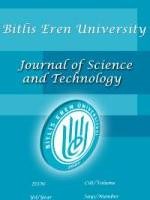Can Patients with Appendicitis in Pregnancy be Operated in Secondary Hospital: A retrospective Study
Can Patients with Appendicitis in Pregnancy be Operated in Secondary Hospital: A retrospective Study
___
- [1] Franca Neto AH, Ramos do Amorm MM, Virgolina Nobreca BMS. Acute appendicitis in pregnancy: literature review. Rev Assoc Med Bras 2015; 61(2):170-7.[2] Wilasrusmee C, Sukrat B, McEvoy M, Attia J, Thakkinstian A. Systematic review and meta-analysis of safety of laparoscopic versus open appendicectomy for suspected appendicitis in pregnancy. British Journal of Surgery 2012; 99: 1470–1479.[3] Jung SJ, Lee DK, Kim JH, Kong PS, Kim KH, Ba SW. Appendicitis during Pregnancy: The Clinical Experience of a Secondary Hospital. J Korean Soc Coloproctol 2012;28(3):152-9.[4] Arer IM, Alemdaroğlu S, Yeşilağaç H, Yabanoğlu H. Acute appendicitis during pregnancy: case series of 20 pregnant women. Ulus Travma Acil Cerrahi Derg 2016;22(16):545–8.[5] Ilhan E, Senlikci A, Kızanoglu H, Ustüner MA, Vardar E, Aykas A, Yeldan E, Yıldırım M. Do intestinal parasitic infestations in patients with clinically acute appendicitis increase the rate of negative laparotomy? Analysis of 3863 cases from Turkey. Przegląd Gastroenterologiczny 2013; 8 (6):366-9.[6] Kapan S, Bozkurt MA, Turhan AN, Gönenç M, Alış H. Management of acute appendicitis in pregnancy. Ulus Travma Acil Cerrahi Derg 2013;19:20–4.[7] Kazim SF, Inam Pal KM. Appendicitis in pregnancy: Experiance of thirty-eight patients diagnosed and managed at a tertiary care hospital in Karachi. International Journal of Surgery 2009;7:365–7.[8] Lurie S, Rahamim E, Piper I, Golan A, Sadan O. Total and differential leukocyte counts percentiles in normal pregnancy. Eur J Obstet Gynecol Reprod Biol. 2008;136(1):16-9.[9] Barth WH Jr, Goldberg JE. Acute appendicitis in pregnancy. Uptodate. [cited 2014 feb 28]. Available at: http://uptodate.com.[10] Yilmaz HG, Akgun Y, Bac B, Celik Y. Acute appendicitis in pregnancy- -risk factors associated with principal outcomes: a case control study. Int J Surg 2007;5:192–7.[11] Burcu B, Ekinci O, Atak T, Orhun K, Eren TT, Alimoglu O. Acute appendicitis in pregnancy: Case series and review. North Clin Istanbul 2016;3(1):60–3.[12] McGory MI, Zingmond DS, Tillou A, Hiatt RJ, Ko CY, Cryer HM. Negative appendectomy in pregnant women is associated with a substantial risk of fetal loss. J Am Coll Surg 2007;205:534-40.[13] Wieseler KM, Bhargava P, Kanal KM, Vaidya S, Stewart BK, Dighe MK. Imaging in pregnant patients: examination appropriateness. Radiographics 2010;30:1215-29.[14] Walker HGM, Samaraee AA, Mills SJ, Kalbassi MR. Laparoscopic appendicectomy in pregnancy: A systematic review of the published evidence. International Journal of Surgery 2014;12:1235-41.
- Yayın Aralığı: Yılda 2 Sayı
- Başlangıç: 2011
- Yayıncı: Bitlis Eren Üniversitesi
Structural Analysis of Ahlat Emir Bayındır Bridge
Ercan IŞIK, Barış ANTEP, İbrahim Baran KARAŞİN
Elastic scattering of 17F nuclei from 58Ni target: Comparison with three different models
Sepsis and Nursing Care in Pediatric Patients
Can Patients with Appendicitis in Pregnancy be Operated in Secondary Hospital: A retrospective Study
Adnan BUDAK, Abdullah ŞENLİKÇİ, Ramazan GÜVEN
Measurement of anxiety and depression level for nurses
Ayşegül ALKAN EZİN, Zeynep Şefika EKŞİOĞLU, Ramazan GÜVEN
The Annual Change of Environmental Gamma Radiation in Bitlis
Sultan ŞAHİN BAL, Şule KARATEPE, Muhammed Fatih KULUÖZTÜRK, Engin YILMAZ, Murat KURŞAT
Introduction to Wavelets and their applications in signal denoising
Cigdem POLAT, Mehmet Siraç ÖZERDEM
Little Knowledgeable Mothers of Modern World: Diarrhea is an Important Public Health Problem
Eylem KUDAY KAYKISIZ, Ramazan GÜVEN, Mihriban SÖNMEZSOY, Ali TONGUN
